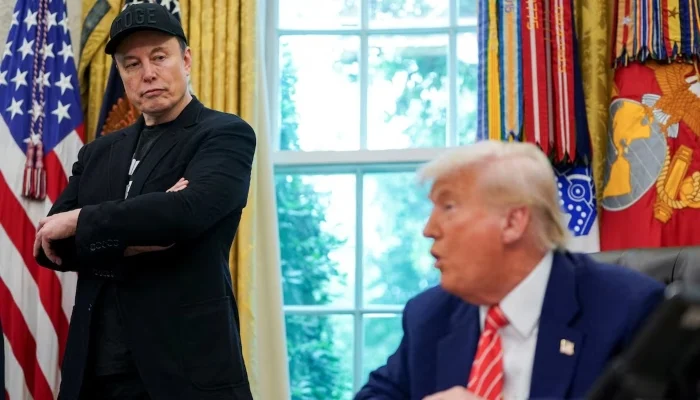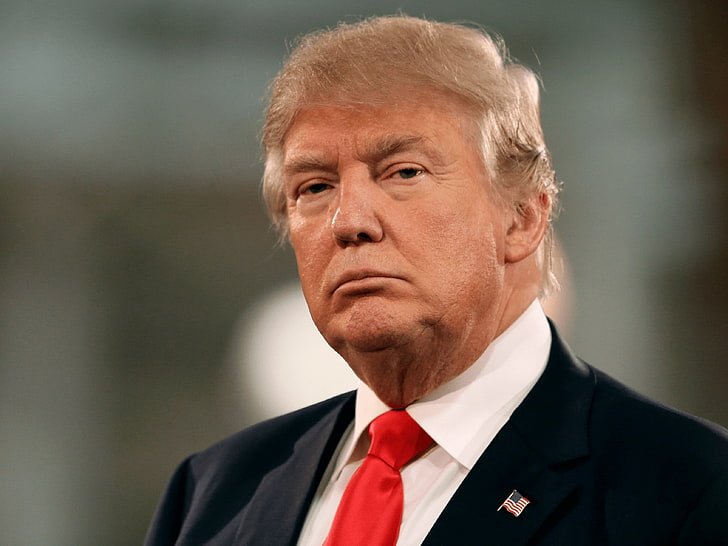Senate Advances Trump’s Sweeping Tax‐Cut & Spending Megabill: A 51–49 Procedural Victory advances
By Reuters, updated June 29, 2025
WASHINGTON, June 29 – In a dramatic late-night showdown on Capitol Hill, the U.S. Senate yesterday overcame a pivotal procedural hurdle in advancing President Donald Trump’s sweeping “megabill,” which blends massive tax cuts with simultaneous increases in federal spending. The motion to proceed to full debate passed on a razor-thin 51–49 vote, marking a critical first victory for the administration’s flagship legislative package. But the narrow margin—and high-voltage political maneuvering—lay bare the ideological and political deep divides now engulfing the nation’s capital.
Senate Majority Leader Mitch McConnell (R–Ky.) shepherded the procedural vote forward after an all-night lockstep by both parties, underscoring its importance in the Republican legislative agenda. The outcome guarantees that the Senate will begin full debate and amendment proceedings on what supporters are calling the “Big, Beautiful Bill” (BBB), a moniker embraced by President Trump, reflecting its scope, ambition, and ideological ambition.
A High-Stakes Night: Delay, Dealmaking, and Drama
The procedural vote was the culmination of a frenetic day-and-night session in which senators from both parties engaged in last-minute negotiations, delays, and strategic opposition. McConnell had delayed the vote for hours, leveraging committee assignments to entice wavering Republicans. Three GOP senators—Thom Tillis (N.C.), Ron Johnson (Wis.), and Rand Paul (Ky.)—initially joined Democrats in voting against the bill’s advancement, citing concerns over fiscal irresponsibility and insufficient spending restraint.
Meanwhile, Senators Rick Scott (Fla.), Mike Lee (Utah), and Cynthia Lummis (Wyo.) remained in intense negotiations with McConnell’s office, seeking deeper spending cuts and structural reforms before casting votes in favor. Eventually, Wisconsin’s Ron Johnson pivoted, spurred by late assurances on future amendments and a statement that further fiscal prudence would be permitted in the upcoming debate. Tillis and Paul remained the only Republicans opposing the bill’s procedural advance.
As the final tally landed at 51–49, President Trump monitored in real time from the Oval Office, according to a senior White House aide. The bill’s advancement clears the path for full Senate consideration, although the party-line dynamics suggest that passage in the full Senate—much less through reconciliation with the House—will remain a close and contentious endeavor.
Inside the Legislation: Tax Cuts, Border Security, Military Funding—and Debt
Spanning a colossal 940 pages, the legislation represents a broad legislative package that seeks to extend and expand elements of the 2017 Trump‐era tax cuts—particularly those benefiting corporations and higher-income individuals—while simultaneously ramping up spending for military preparedness, border enforcement, and immigration control.
Key components include:
-
Tax provisions: Extension of individual and business tax cuts from the 2017 Tax Cuts and Jobs Act, new reductions in the capital gains tax, expanded deductions for families with children and dependents, and rollback of provisions limiting state and local tax (SALT) deductions, which are especially favored in high-tax states.
-
Border and immigration: A significant infusion of funding for the Department of Homeland Security, including proprietary line items aimed at enhanced border wall construction, customizable visa systems prioritizing skill over family ties (i.e., “merit-based immigration”), and stepped-up enforcement programs for undocumented immigrants.
-
Military and defense: A robust increase in defense spending, with additional funding for troop readiness, modernization of nuclear forces, advanced missile defense systems, and accelerated purchase of fighter jets, naval vessels, and next-gen technologies.
-
Other domestic and infrastructure spending: Targeted increases for rural broadband build-out, investments in American-made electric vehicle manufacturing, research funding for energy and semiconductor industries, and a moderate boost in funding for public land conservation projects.
While supporters frame the bill as an investment in both economic growth and national security, nonpartisan analysts from think tanks like the Committee for a Responsible Federal Budget and the Congressional Budget Office project that the package would add trillions of dollars to the national debt—currently at approximately $36.2 trillion. Congressional scorekeepers estimate the mix of tax cuts and spending hikes would add some $2 to $3 trillion in new federal deficits over the next decade—worsening already elevated debt levels.
“Utterly Insane and Destructive”: Musk’s Withering Critique
Perhaps most notable in the flurry of responses was billionaire entrepreneur Elon Musk’s scathing denunciation. Musk, who has increasingly inserted himself into political discourse, posted a blistering rebuke on X (formerly Twitter), branding the plan “utterly insane and destructive.” He further warned that the proposal would “destroy millions of jobs” and inflict “immense strategic harm” on the United States, especially by “propping up obsolete industries at the expense of future‐facing innovation.”
In a subsequent media call, Musk clarified his position: he supports tax‐cut policies that foster innovation—particularly in clean energy, artificial intelligence, and space—but said he opposes “corporate welfare” for declining sectors such as fossil fuels, legacy automakers, and aging infrastructure. Musk’s critique echoes objections from progressive economists and clean-energy advocates, who argue that the tax‐cut components subsidize old‐growth industries and fail to meet modern innovation needs.
Democratic Opposition: “Radical” and Lacking Transparency
Democratic leaders rallied to oppose the measure, characterizing it as a naked power grab with insufficient public scrutiny. Senate Minority Leader Chuck Schumer (D–N.Y.) demanded that the full text—nearly 940 densely written pages—be read aloud on the Senate floor before debate could begin. Schumer’s demand exemplifies the procedural tactics Democrats planned to deploy to slow the bill’s momentum and highlight its sweeping scope.
“If Senate Republicans won’t tell the American people what’s in this bill, then Democrats are going to force this chamber to read it from start to finish,” Schumer said defiantly. He described the bill as “radical” and warned that its tax-cut elements disproportionately favor wealthy individuals and corporations at the expense of critical social programs—such as Medicare, Medicaid, and affordable housing—which serve middle- and lower-income Americans.
Democrats also accused the bill of advancing the president’s 2024 re-election agenda under a veil of fiscal irresponsibility. They cite the growing national debt and warn that budget deficits could trigger future economic troubles—including inflation, borrowing costs, and reduced fiscal flexibility for responding to emergencies.
Implications for U.S. National Priorities
Proponents of the bill argue it will spur long-term economic growth, increase competitiveness on the global stage, and align federal priorities with national security goals. By blending tax relief with increased military and border expenditures, Republicans assert the bill presents a balanced approach to economic empowerment and national defense.
Critics, including economists from both parties, emphasize the likely debt implications and warn that ballooning deficits could crowd out future policy tools. Geopolitically, the strategic implications—Musk’s “immense strategic harm”—center on the concern that sustained subsidies to legacy industries may hamper investment in emerging fields such as AI, quantum computing, clean energy, and biotechnology. Some analysts even link excessive debt to diminished U.S. ability to project power abroad or respond to international crises.
__________________________________________________________
AGP uncovers Rs663bn tax black hole in FBR systems power 7
Read This Article
__________________________________________________________
Senate Math: Procedural vs. Final Passage
The 51–49 procedural margin reflects not just party allegiances, but indicators of deeper fractures within the Republican caucus. While Majority Leader McConnell maintains firm control over party operations, the defection of traditional conservatives like Rand Paul and Thom Tillis is a testament to growing internal debate over size and scope of government. Johnson’s last-minute vote flip illustrates how leadership leveraged assurances regarding upcoming amendments—particularly further sequestration of discretionary spending.
The procedural threshold does not necessarily guarantee final passage. Debate amendments could shift allegiances depending on how far left or right the legislation moves. With the House of Representatives currently controlled by Republicans, passing the Senate version remains a likely—but still challenging—endeavor.
What Comes Next: Debate, Amendments, and the Road to Final Vote
With procedural clearance secured, the Senate now moves to the debate phase. Leadership expects initial debate to begin midweek. Senators may propose amendments on issues ranging from fiscal limits, climate provisions, tax credit targeting, defense authorizations, to immigration carve‑outs.
Each amendment vote will reveal the depth of Senate support—and could realign votes ahead of the final up-or-down vote on passage. If the bill wins Senate approval, it would then return to the House—where leaders indicate they are prepared to accept the Senate version.
President Trump, seeking to deliver a legislative victory ahead of the 2024 re‑election campaign, is pushing the urgency of the bill. “This is our chance to put America first,” he said, emphasizing border security and economic growth.
Fiscal 2025 and 2026 Budgets Hang in the Balance
The bill’s timing aligns with a looming deadline for passing the Fiscal Year 2026 government funding bills. If passed, the megabill could be inserted into omnibus appropriations or a continuing resolution, meaning courts, agencies, and even states would need to adjust budgets to reflect the new metrics—impacting local infrastructure projects, social service funding, and defense contracting pipelines.
Public Reaction: Mixed Support, Sharp Doubts
Polling data is mixed. Republican-leaning surveys indicate moderate support for tax cuts and border enforcement, with a majority favoring a combined bill. However, among independents and Democrats, the surge in deficits is a significant concern—many respondents say they support tax relief, but not if it comes at the cost of rising national debt.
Focus groups show that messaging may define public opinion. When the bill is framed as “pro-growth and pro-defense,” it polls well among swing voters. But when presented as “adding trillions to the debt,” support weakens substantially.
Broader Political Implications
For Republicans, the bill—if passed—will represent one of their most ambitious legislative accomplishments since 2017’s Tax Cuts and Jobs Act and 2018’s First Step Act. It positions Trump for a campaign talking point about “delivering results”—particularly those emphasizing “America-first” economic and national-security themes.
Democrats, on the other hand, see the debate as fertile ground for contrasting visions: austerity and entitlement reform versus social safety nets and fiscal responsibility. If they’re able to mount compelling attacks on deficit spending, low-income tax benefits, and corruption claims, they hope to mobilize their base—and potentially weaken Republican Senate prospects in 2026 and beyond.
Analyst Take: Growth vs Stability
Experts are split:
-
Fiscal watchdogs warn that without offsetting spending cuts or revenue increases elsewhere, the bill is unsustainable—projecting rising interest rates, inflationary pressures, and weakened fiscal standing.
-
Supply-side proponents counter that lower taxes will release private investment and entrepreneurship, thereby boosting GDP enough to counterbalance revenue losses. They also argue that stronger border enforcement and defense readiness are key geopolitical and economic stabilizers.
Emerging concerns include potential misalignment between short-term spending hikes (which could fuel inflation) and long-term deficits. Meanwhile, analysts question whether the tax relief is broad-based enough to stimulate middle-class income growth, or primarily reflexive to corporate profits.
This debate will dominate Washington discourse in the coming weeks as the Senate begins to mark up amendments. By the time the final vote arrives, the legislative package may look substantially different—depending on votes of senators across the ideological spectrum.
Bottom Line: After a tense procedural vote, President Trump’s $X‑trillion tax‑cut and spending megabill is now in full Senate debate. The 51–49 tally reflects both unity and division within the GOP. With Democrats opposing vigorously and analysts warning of ballooning debt, the next phase—amendments, political messaging, and final votes—will determine whether the administration achieves one of its most substantial policy goals of the term.
Senate Advances Trump’s Sweeping Tax‐Cut & Spending Megabill: A 51–49 Procedural Victory
By Reuters, updated June 29, 2025
WASHINGTON, June 29 – In a dramatic late-night showdown on Capitol Hill, the U.S. Senate yesterday overcame a pivotal procedural hurdle in advancing President Donald Trump’s sweeping “megabill,” which blends massive tax cuts with simultaneous increases in federal spending. The motion to proceed to full debate passed on a razor-thin 51–49 vote, marking a critical first victory for the administration’s flagship legislative package. But the narrow margin—and high-voltage political maneuvering—lay bare the ideological and political deep divides now engulfing the nation’s capital.
Senate Majority Leader Mitch McConnell (R–Ky.) shepherded the procedural vote forward after an all-night lockstep by both parties, underscoring its importance in the Republican legislative agenda. The outcome guarantees that the Senate will begin full debate and amendment proceedings on what supporters are calling the “Big, Beautiful Bill” (BBB), a moniker embraced by President Trump, reflecting its scope, ambition, and ideological ambition.
A High-Stakes Night: Delay, Dealmaking, and Drama
The procedural vote was the culmination of a frenetic day-and-night session in which senators from both parties engaged in last-minute negotiations, delays, and strategic opposition. McConnell had delayed the vote for hours, leveraging committee assignments to entice wavering Republicans. Three GOP senators—Thom Tillis (N.C.), Ron Johnson (Wis.), and Rand Paul (Ky.)—initially joined Democrats in voting against the bill’s advancement, citing concerns over fiscal irresponsibility and insufficient spending restraint.
Meanwhile, Senators Rick Scott (Fla.), Mike Lee (Utah), and Cynthia Lummis (Wyo.) remained in intense negotiations with McConnell’s office, seeking deeper spending cuts and structural reforms before casting votes in favor. Eventually, Wisconsin’s Ron Johnson pivoted, spurred by late assurances on future amendments and a statement that further fiscal prudence would be permitted in the upcoming debate. Tillis and Paul remained the only Republicans opposing the bill’s procedural advance.
As the final tally landed at 51–49, President Trump monitored in real time from the Oval Office, according to a senior White House aide. The bill’s advancement clears the path for full Senate consideration, although the party-line dynamics suggest that passage in the full Senate—much less through reconciliation with the House—will remain a close and contentious endeavor.
Inside the Legislation: Tax Cuts, Border Security, Military Funding—and Debt
Spanning a colossal 940 pages, the legislation represents a broad legislative package that seeks to extend and expand elements of the 2017 Trump‐era tax cuts—particularly those benefiting corporations and higher-income individuals—while simultaneously ramping up spending for military preparedness, border enforcement, and immigration control.
Key components include:
-
Tax provisions: Extension of individual and business tax cuts from the 2017 Tax Cuts and Jobs Act, new reductions in the capital gains tax, expanded deductions for families with children and dependents, and rollback of provisions limiting state and local tax (SALT) deductions, which are especially favored in high-tax states.
-
Border and immigration: A significant infusion of funding for the Department of Homeland Security, including proprietary line items aimed at enhanced border wall construction, customizable visa systems prioritizing skill over family ties (i.e., “merit-based immigration”), and stepped-up enforcement programs for undocumented immigrants.
-
Military and defense: A robust increase in defense spending, with additional funding for troop readiness, modernization of nuclear forces, advanced missile defense systems, and accelerated purchase of fighter jets, naval vessels, and next-gen technologies.
-
Other domestic and infrastructure spending: Targeted increases for rural broadband build-out, investments in American-made electric vehicle manufacturing, research funding for energy and semiconductor industries, and a moderate boost in funding for public land conservation projects.
While supporters frame the bill as an investment in both economic growth and national security, nonpartisan analysts from think tanks like the Committee for a Responsible Federal Budget and the Congressional Budget Office project that the package would add trillions of dollars to the national debt—currently at approximately $36.2 trillion. Congressional scorekeepers estimate the mix of tax cuts and spending hikes would add some $2 to $3 trillion in new federal deficits over the next decade—worsening already elevated debt levels.
“Utterly Insane and Destructive”: Musk’s Withering Critique
Perhaps most notable in the flurry of responses was billionaire entrepreneur Elon Musk’s scathing denunciation. Musk, who has increasingly inserted himself into political discourse, posted a blistering rebuke on X (formerly Twitter), branding the plan “utterly insane and destructive.” He further warned that the proposal would “destroy millions of jobs” and inflict “immense strategic harm” on the United States, especially by “propping up obsolete industries at the expense of future‐facing innovation.”
In a subsequent media call, Musk clarified his position: he supports tax‐cut policies that foster innovation—particularly in clean energy, artificial intelligence, and space—but said he opposes “corporate welfare” for declining sectors such as fossil fuels, legacy automakers, and aging infrastructure. Musk’s critique echoes objections from progressive economists and clean-energy advocates, who argue that the tax‐cut components subsidize old‐growth industries and fail to meet modern innovation needs.
Democratic Opposition: “Radical” and Lacking Transparency
Democratic leaders rallied to oppose the measure, characterizing it as a naked power grab with insufficient public scrutiny. Senate Minority Leader Chuck Schumer (D–N.Y.) demanded that the full text—nearly 940 densely written pages—be read aloud on the Senate floor before debate could begin. Schumer’s demand exemplifies the procedural tactics Democrats planned to deploy to slow the bill’s momentum and highlight its sweeping scope.
“If Senate Republicans won’t tell the American people what’s in this bill, then Democrats are going to force this chamber to read it from start to finish,” Schumer said defiantly. He described the bill as “radical” and warned that its tax-cut elements disproportionately favor wealthy individuals and corporations at the expense of critical social programs—such as Medicare, Medicaid, and affordable housing—which serve middle- and lower-income Americans.
Democrats also accused the bill of advancing the president’s 2024 re-election agenda under a veil of fiscal irresponsibility. They cite the growing national debt and warn that budget deficits could trigger future economic troubles—including inflation, borrowing costs, and reduced fiscal flexibility for responding to emergencies.
Implications for U.S. National Priorities
Proponents of the bill argue it will spur long-term economic growth, increase competitiveness on the global stage, and align federal priorities with national security goals. By blending tax relief with increased military and border expenditures, Republicans assert the bill presents a balanced approach to economic empowerment and national defense.
Critics, including economists from both parties, emphasize the likely debt implications and warn that ballooning deficits could crowd out future policy tools. Geopolitically, the strategic implications—Musk’s “immense strategic harm”—center on the concern that sustained subsidies to legacy industries may hamper investment in emerging fields such as AI, quantum computing, clean energy, and biotechnology. Some analysts even link excessive debt to diminished U.S. ability to project power abroad or respond to international crises.
Senate Math: Procedural vs. Final Passage
The 51–49 procedural margin reflects not just party allegiances, but indicators of deeper fractures within the Republican caucus. While Majority Leader McConnell maintains firm control over party operations, the defection of traditional conservatives like Rand Paul and Thom Tillis is a testament to growing internal debate over size and scope of government. Johnson’s last-minute vote flip illustrates how leadership leveraged assurances regarding upcoming amendments—particularly further sequestration of discretionary spending.
The procedural threshold does not necessarily guarantee final passage. Debate amendments could shift allegiances depending on how far left or right the legislation moves. With the House of Representatives currently controlled by Republicans, passing the Senate version remains a likely—but still challenging—endeavor.
What Comes Next: Debate, Amendments, and the Road to Final Vote
With procedural clearance secured, the Senate now moves to the debate phase. Leadership expects initial debate to begin midweek. Senators may propose amendments on issues ranging from fiscal limits, climate provisions, tax credit targeting, defense authorizations, to immigration carve‑outs.
Each amendment vote will reveal the depth of Senate support—and could realign votes ahead of the final up-or-down vote on passage. If the bill wins Senate approval, it would then return to the House—where leaders indicate they are prepared to accept the Senate version.
President Trump, seeking to deliver a legislative victory ahead of the 2024 re‑election campaign, is pushing the urgency of the bill. “This is our chance to put America first,” he said, emphasizing border security and economic growth.
Fiscal 2025 and 2026 Budgets Hang in the Balance
The bill’s timing aligns with a looming deadline for passing the Fiscal Year 2026 government funding bills. If passed, the megabill could be inserted into omnibus appropriations or a continuing resolution, meaning courts, agencies, and even states would need to adjust budgets to reflect the new metrics—impacting local infrastructure projects, social service funding, and defense contracting pipelines.
Public Reaction: Mixed Support, Sharp Doubts
Polling data is mixed. Republican-leaning surveys indicate moderate support for tax cuts and border enforcement, with a majority favoring a combined bill. However, among independents and Democrats, the surge in deficits is a significant concern—many respondents say they support tax relief, but not if it comes at the cost of rising national debt.
Focus groups show that messaging may define public opinion. When the bill is framed as “pro-growth and pro-defense,” it polls well among swing voters. But when presented as “adding trillions to the debt,” support weakens substantially.
Broader Political Implications
For Republicans, the bill—if passed—will represent one of their most ambitious legislative accomplishments since 2017’s Tax Cuts and Jobs Act and 2018’s First Step Act. It positions Trump for a campaign talking point about “delivering results”—particularly those emphasizing “America-first” economic and national-security themes.
Democrats, on the other hand, see the debate as fertile ground for contrasting visions: austerity and entitlement reform versus social safety nets and fiscal responsibility. If they’re able to mount compelling attacks on deficit spending, low-income tax benefits, and corruption claims, they hope to mobilize their base—and potentially weaken Republican Senate prospects in 2026 and beyond.
Analyst Take: Growth vs Stability
Experts are split:
-
Fiscal watchdogs warn that without offsetting spending cuts or revenue increases elsewhere, the bill is unsustainable—projecting rising interest rates, inflationary pressures, and weakened fiscal standing.
-
Supply-side proponents counter that lower taxes will release private investment and entrepreneurship, thereby boosting GDP enough to counterbalance revenue losses. They also argue that stronger border enforcement and defense readiness are key geopolitical and economic stabilizers.
Emerging concerns include potential misalignment between short-term spending hikes (which could fuel inflation) and long-term deficits. Meanwhile, analysts question whether the tax relief is broad-based enough to stimulate middle-class income growth, or primarily reflexive to corporate profits.
This debate will dominate Washington discourse in the coming weeks as the Senate begins to mark up amendments. By the time the final vote arrives, the legislative package may look substantially different—depending on votes of senators across the ideological spectrum.
Bottom Line: After a tense procedural vote, President Trump’s $X‑trillion tax‑cut and spending megabill is now in full Senate debate. The 51–49 tally reflects both unity and division within the GOP. With Democrats opposing vigorously and analysts warning of ballooning debt, the next phase—amendments, political messaging, and final votes—will determine whether the administration achieves one of its most substantial policy goals of the term.




